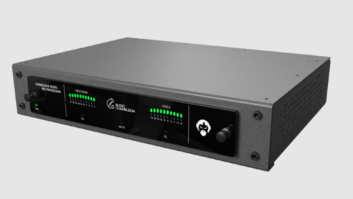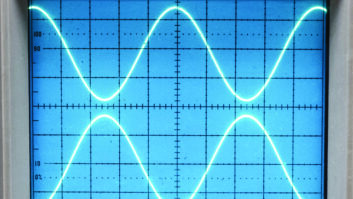This is one in a series of occasional articles about radio broadcast industry technical milestones. Read past Milestones under Columns atradioworld.com.
In any industry, we can look back and identify occasions when the appearance of a novel product or technique ushered in a new period.
In radio, one was the introduction in 1956 of the extremely successful Gates Sta-Level. This box was an ultra-simple, mild, automatic audio gain control unit using ordinary tube circuitry and hand-wiring concepts ubiquitous at the time.
(click thumbnail)
Because of its reasonable price and simple implementation, it brought effective automatic audio control to countless medium and small radio stations throughout the country. Within limits, the cost-effective Sta-Level could tame unruly audio and increase average modulation, especially when used in conjunction with a peak limiter.
What’s in the box?
The standard approach to audio processing design at the time was to build an amplifier with a high-level output such that audio samples of that output could be easily rectified, proportionated and modeled to fit our hearing sensibilities; then this DC signal was introduced back into an earlier low-level stage to control the audio. Balanced push-pull circuitry was used to help cancel harmonic content as well as to simplify control, remove artifacts and enhance fidelity.
The Sta-Level was no different, with three gain stages yielding an overall maximum 62 dB of gain (literally –55 dBm mic level to +8 dBm line level). A maximum output level of +24 dBm (0.25 watts into 600 ohms) was possible with the removal of the output pad.
A sample from the plates of the 6V6 pentode power output tubes was rectified in a 6AL5 double diode tube and then the DC combined to form the control signal, which is essentially a variable negative bias level introduced into the grids of the two sections of the GL-6386 input/control tube.
The OB2 voltage regulator was used to provide a stable positive bias of about 25 volts that had to be exceeded before a control voltage could be rectified, effectively setting the threshold level for control.
The Gates designers were able to fit all this into an enclosure three rack units high with a fold-down front panel.
Compression and limiting are not the same. Stock from the factory, the Sta-Level was only a modest 3.3 to 1 compressor (a 3.3 dB increase in input produces only a 1 dB change in output). An advantage of starting with a high-level DC control signal is that you can send it through an RC (resistor and capacitor) network to vary the attack time (how fast it controls) and release time (how long it holds down the level) as well as the compression ratio.
Radio engineers tinkered with these values to get that perfect operation to fit/complement a given format’s music and voices. Compression ratios of 6:1 were possible and release time constants could be made minutes long.
Wanting to sound loud, rock and roll stations of the era tended to be more aggressive, with heavy compression and fast release modifications. Classical, news, talk and MOR stations left the box in stock condition or with less edgy settings.
Out of the shipping crate, setup usually was straightforward. Connect the output of the main control room board to the Sta-Level, run your regular programming, put the release time switch on your desired position, set the input pot to achieve about –15 dB of compression on the meter, set the fine adjust on the output pad for a workable level into the following connections to the transmitter and, voilà, you and your Sta-Level were good to go.
At most stations in the 1950s, leased equalized telephone lines served as the STLs; in the usual arrangement, the Sta-Level was at the studio keeping up the level for best signal-to-noise to feed into the line, and a peak limiter was installed at the transmitter for final control.
Those of us who had just dry LAD pairs (unequalized circuits direct from the studio to the transmitter, just two wires) usually removed the Sta-Level output pad so that we had +24 dBm output with a passive equalizer between it and a Western Electric repeat coil to feed the dry pair at 50 ohms.
Bring up da noise
With no audio input, the Sta-Level would release to maximum gain, bringing up the system noise if present. In this aspect it was unlike the later, more deluxe CBS Audimax or Gates Level Devil AGC units, which had a gating feature to hold gain level where it was or return to unity when there was suddenly no audio to control.
Airchecks from these times are full of the swoop of aggressive Sta-Levels and the full “echo” return sound from the announcer mic reverb chamber.
No matter what the configuration, the Sta-Level was a stalwart, raising the average modulation levels across the country, extending the range of stations and providing a more uniform listening level. Even after they were removed from air service, many stayed on for years, pre-leveling audio for production rooms, incoming telephone calls, actualities and live recordings.
The Sta-Level still brings top dollar in private sales and on eBay for its unique sound in audio production and for its place in the history of the industry.
Comment on this or any article. Write to [email protected].
Charles S. Fitch, W2IPI, is a registered professional consultant engineer, member of the AFCCE, senior member of the SBE, lifetime CPBE with AMD, licensed electrical contractor, former station owner and former director of engineering of WTIC(TV) in Hartford, Conn., and WHSH(TV) in Marlborough, Mass.













